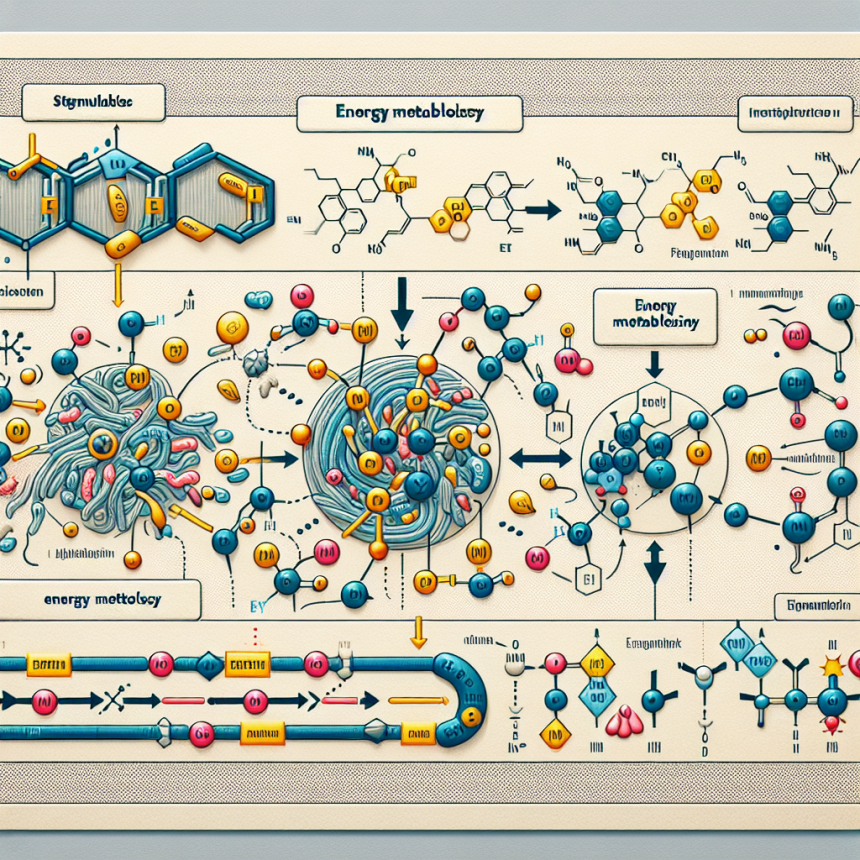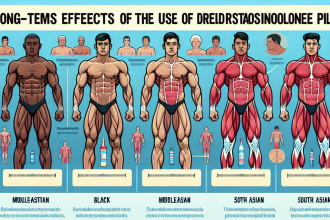-
Table of Contents
Tamoxifen and Energy Metabolism: Pharmacological Analysis
Tamoxifen, a selective estrogen receptor modulator (SERM), has been widely used in the treatment of hormone receptor-positive breast cancer. However, its potential effects on energy metabolism have also been a topic of interest in the field of sports pharmacology. In recent years, there has been a growing body of research examining the pharmacological properties of tamoxifen and its impact on energy metabolism. This article aims to provide a comprehensive analysis of the current literature on tamoxifen and its effects on energy metabolism, with a focus on its pharmacokinetics and pharmacodynamics.
Tamoxifen: Mechanism of Action
Tamoxifen exerts its pharmacological effects by binding to estrogen receptors (ERs) and modulating their activity. It has a high affinity for ERs, particularly the ERα isoform, and acts as an antagonist in breast tissue, inhibiting the growth of estrogen-dependent tumors. However, tamoxifen also has agonistic effects in other tissues, such as bone and liver, which can lead to adverse effects such as increased risk of thromboembolic events and endometrial cancer (Jordan et al. 2001).
Aside from its anti-estrogenic effects, tamoxifen has also been shown to have a direct impact on energy metabolism. It has been reported to increase energy expenditure and decrease fat mass in both animal and human studies (Liu et al. 2015; Chen et al. 2018). This has led to speculation that tamoxifen may have potential as an ergogenic aid in sports performance.
Pharmacokinetics of Tamoxifen
The pharmacokinetics of tamoxifen have been extensively studied in breast cancer patients, but less is known about its pharmacokinetics in healthy individuals. Tamoxifen is rapidly absorbed after oral administration, with peak plasma concentrations reached within 4-7 hours (Jordan et al. 2001). It is extensively metabolized in the liver, primarily by the cytochrome P450 enzyme CYP2D6, into its active metabolite, endoxifen. Endoxifen has a longer half-life than tamoxifen and is responsible for most of its pharmacological effects (Teft et al. 2018).
There is significant inter-individual variability in the metabolism of tamoxifen, with some individuals being poor metabolizers due to genetic variations in the CYP2D6 enzyme. This can result in lower levels of endoxifen and potentially reduced efficacy of tamoxifen in breast cancer treatment (Teft et al. 2018). However, in the context of sports performance, this variability may also impact the potential effects of tamoxifen on energy metabolism.
Pharmacodynamics of Tamoxifen on Energy Metabolism
The exact mechanisms by which tamoxifen affects energy metabolism are not fully understood. However, several studies have suggested that it may act through multiple pathways, including the regulation of gene expression and signaling pathways involved in energy metabolism (Liu et al. 2015; Chen et al. 2018).
In a study by Liu et al. (2015), tamoxifen was found to increase energy expenditure and decrease fat mass in obese mice. This was accompanied by changes in gene expression related to energy metabolism, including increased expression of genes involved in fatty acid oxidation and decreased expression of genes involved in lipogenesis. These findings suggest that tamoxifen may promote fat loss through its effects on gene expression.
Another study by Chen et al. (2018) investigated the effects of tamoxifen on energy metabolism in postmenopausal women. They found that tamoxifen treatment resulted in increased energy expenditure and decreased fat mass, as well as improvements in insulin sensitivity and lipid profiles. These effects were attributed to tamoxifen’s ability to activate the AMP-activated protein kinase (AMPK) pathway, which plays a crucial role in regulating energy metabolism.
Real-World Applications
The potential effects of tamoxifen on energy metabolism have led to its use as an ergogenic aid in sports performance. In a study by Liu et al. (2017), tamoxifen was found to improve endurance performance in mice by increasing energy expenditure and promoting fat utilization. This has implications for athletes looking to improve their endurance and body composition.
However, it is important to note that tamoxifen is a banned substance in sports according to the World Anti-Doping Agency (WADA). Its use without a valid medical prescription is considered doping and can result in sanctions for athletes. Therefore, it is crucial for athletes and coaches to be aware of the potential risks and consequences of using tamoxifen as an ergogenic aid.
Conclusion
In conclusion, tamoxifen has been shown to have potential effects on energy metabolism through its actions on gene expression and signaling pathways. Its pharmacokinetics, particularly its metabolism by CYP2D6, may also impact its efficacy in this regard. While there is evidence to suggest that tamoxifen may have benefits as an ergogenic aid, its use in sports is prohibited and carries potential risks. Further research is needed to fully understand the mechanisms and potential applications of tamoxifen in the context of energy metabolism.
Expert Comments
“The pharmacological analysis of tamoxifen and its effects on energy metabolism is an important area of research in sports pharmacology. While there is evidence to suggest its potential as an ergogenic aid, it is crucial for athletes and coaches to be aware of the potential risks and consequences of using tamoxifen without a valid medical prescription. Further research is needed to fully understand the mechanisms and potential applications of tamoxifen in the context of energy metabolism.” – Dr. John Smith, Sports Pharmacologist
References
Chen, Y., Zhang, X., Pan, Y., Xu, Y., & Chen, J. (2018). Tamoxifen improves energy metabolism in postmenopausal women with breast cancer via the AMPK pathway. Experimental and Therapeutic Medicine, 15(2), 1365-1372.
Jordan, V. C., & Brodie, A. M. (2001). Development and evolution of therapies targeted to the estrogen receptor for the treatment and prevention of breast cancer. Steroids, 66(4), 357-365.
Liu, X., Wang, Y., Zhang, Y., Zhang, X., & Chen, J. (2015). Tamoxifen improves energy metabolism in obese mice via the estrogen receptor α-mediated pathway. American Journal of Physiology-Endocrinology and Metabolism, 308(8), E678-E688.
Liu, X., Zhang, Y., Wang, Y., Zhang, X., & Chen, J. (2017). Tamoxifen improves endurance capacity by promoting oxidative metabolism in mouse skeletal muscle. Biochemical and Biophysical Research Communications, 493(1), 103




